Way Too Indie’s Top 10 Indie Sci-fi Films

When you think sci-fi movies, you might think of the low, swirling drone of a lightsaber. You might think of a DeLorean barreling through a parking lot at 88mph and vanishing into thin air as it leaves a trail of fire in its wake. You might think of Sigourney Weaver going toe to toe with an Alien Queen in a badass power-loader. You might even think of “Khaaaaaaan!” or “I know Kung-Fu.”
We don’t. We’re Way…Too…sophisticated for that (buh-dum-psh!)
All joking aside, we love sci-fi movies of all shapes and sizes, including big-budget ones. The problem is, since the advent of CGI, it feels like it’s a requirement for every sci-fi film to cram a mind-numbing amount of digital effects into every frame. Transformers and the Star Wars prequels, for example, abuse CGI so egregiously that they feel like half-films. They’re hardly ‘filming’ anything and—more importantly—they’re missing the point.
Science fiction at its core is about exploring the dangers and consequences of abusing science. It’s about peering into another world and learning from it so as to better our own. It’s about sparking philosophical discussion—Do Androids Dream of Electric Sheep? It’s about scientific allegories, not data—‘the force’ is about faith, not ‘midi-chlorians.’
These ten films get it. Their directors have created incredible works of sci-fi, and they’ve achieved it without spending exorbitant amounts of cash on lasers and explosions and spaceships and frivolous bullshit. These films aren’t extravagant or shiny—they’re gritty, tethered to reality. Tethered to our reality. They tackle subjects like self-identity, discrimination, envy, and regret through the power of blow-your-freakin’-mind science.
Some might view a ‘low-budget’ as a disadvantage, but these filmmakers used their meager funds as a catalyst for innovation. These films are every bit as good as their bloated-budget brothers. They prove that Monsters we barely see can be just as fascinating as blue-skinned, long-limbed, cat-faced, Disney-eyed cartoon characters. No offense, Mr. Cameron. T2 was the shit. You don’t need expensive special effects and costumes to tell an amazing science fiction story—all you need is a great idea and the talent and imagination to represent it on screen. Without further ado, here are our Top 10 Indie Sci-fi Films.
Top 10 Indie Sci-fi Films
#10 – Akira
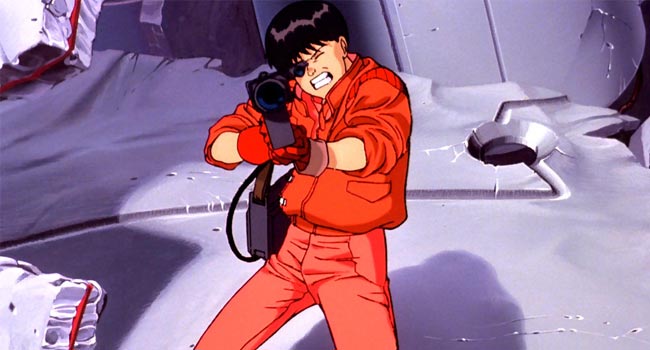
When people hear the word Anime most people run away. They are, unfortunately, missing out on some really exciting films. Akira is one such film. It’s easy to see where the film gets its influences from, but boy oh boy is it very good at showing them off. Akira is that film that has everything a Sci-Fi fan will love; absurdly high buildings, fast vehicles and loads of violence. I’ve seen the film countless times now and honestly I don’t know if I could tell what all actually happens in Akira, but what I will say is that this is one film that has to be seen to be believed. Akira features some of the best imagery in sci-fi for me and it’s all set to a pulsating score that drives the film into a final 30 minutes that will quite literally blow your mind. [Blake]
#9 – Another Earth

Another Earth is a fantastic indie sci-fi film about the discovery of a planet close to ours called Earth 2. However, instead of traveling down the path that most films would attempt to go, Another Earth wisely chooses not to exploit the concept and instead only explores the idea of a second chance in another life. The final scene in the film is one of the most shocking and eerie endings that I have seen in years. The film serves as a great reminder that it is possible to create a terrific sci-fi film without a ton of effects and a large budget. [Dustin]
#8 – Primer
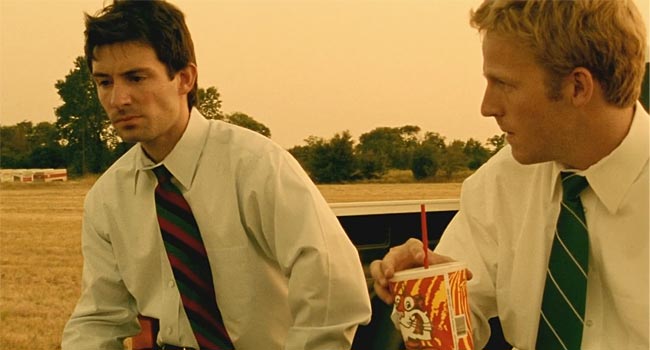
Shane Carruth is a name that is being circulated at high speed this last year due to his recent Sundance success Upstream Color. Primer is the prime example of how to make an independent film with little to no budget– it was so perfect in its visual storytelling that the dialogue did not have to play a key part but just added to the aesthetic and the illusion of two men hooked on physics that happen to accidently create a time machine. Primer is a very intense and an incredibly well put together intellectual indie sci-fi. [Amy]
#7 – Being John Malkovich
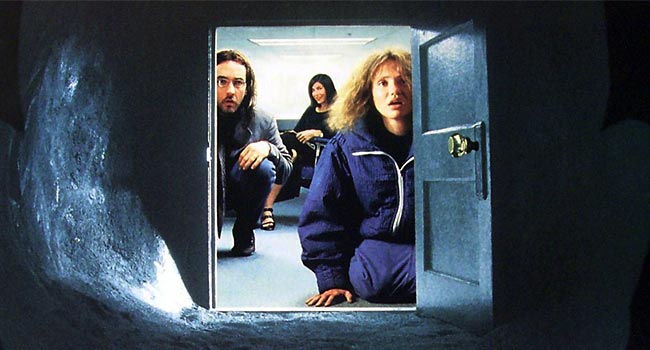
It may come as a bit of a shock that Being John Malkovich could be considered an “indie” film based on it’s commercial success and big named cast list, but the film was made for just thirteen million dollars and despite being nominated for the huge award shows such as the Oscars and Golden Globes, the film also qualified for the Independent Spirit Awards that year. This wild fantasy science fiction film was all about getting into someone’s head, literally. Being John Malkovich is fun mind-trip adventure that is completely original. [Dustin]
#6 – Stalker
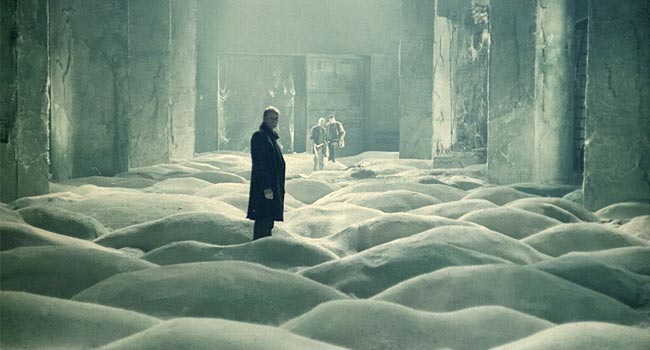
Stalker is a brilliant Sci-Fi film almost for one simple reason. It’s aesthetics. It features no ray guns, no flying cars or any massive skyscrapers tickling the feet of clouds. No teleportation machines, no androids or cool gadgets. Stalker works purely on the way Andrey Tarkovskiy chooses to show you his story. The film is simple tale of a man (a stalker) who is tasked with taking two men to The Zone, a forbidden land where a room exists that grants wishes. The film is essentially two and a half hours of men walking slowly through wastelands of a forgotten world, philosophizing about life and its meaning. But it’s Tarkovskiy’s direction that dazzles us. Featuring long takes and extreme close ups to show a life ravaged by the evil of humanity, Tarkovskiy hypnotizes his audience into a maddening and yet, very fulfilling journey into the soul of men. [Blake]
#5 – Brazil

Terry Gilliam’s Brazil provides a cautionary, paranoid glimpse into a future where the technology we birthed with our own hands begins to swallow us whole. Gilliam shows us thick jungles of wire and tubing spilling into an apartment like spaghetti. We see an old lady so obsessed with recapturing her former beauty that she hires people to pull the skin on her face back so hard that it stretches like silly putty, ready to rip. Though rife with techno-horror, Gilliam finds room to inject his signature sense of whimsy, surrealism, and adventure as well. Few cinematic minds are as imaginative and eccentric as Gilliam’s, and Brazil is his magnum opus. [Bernard]
#4 – Cube
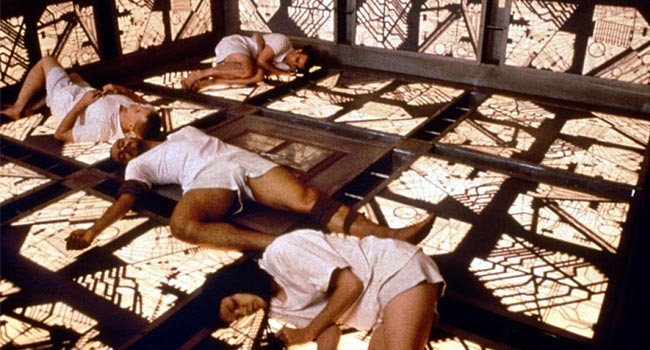
Six strangers wake up in a cube shaped room, with a door on each side leading to another room exactly like it. As they try to find a way out of the seemingly endless series of rooms (some of which are booby trapped to kill whoever enters them), tensions begin to rise until finding a way out is the least of their concerns. The best part about Cube, other than its ingenious concept, is how well it maintains the mystery of what exactly the cube is. With a budget of less than $400,000 (the entire film was shot within one cube ‘room’), Cube has more excitement and smarts than most sci-fi blockbusters from the last decade combined. A quick tip for anyone willing to give Cube a try: Pretend the film’s two sequels don’t exist. It’ll save you plenty of time. [CJ]
#3 – Moon
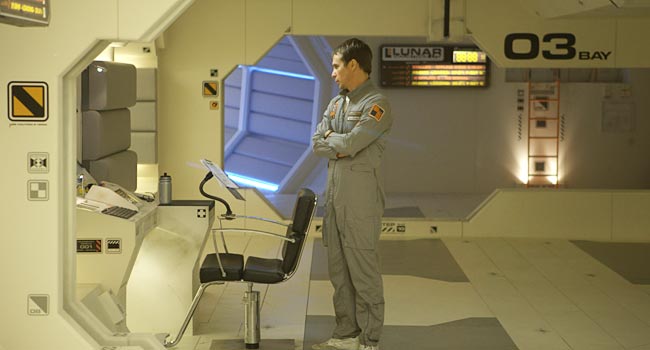
Rarely does a sci-fi movie allow for an Oscar-worthy performance from an actor, but Moon is outstanding entirely because of Sam Rockwell, who is the only actor onscreen for about 95% of the film. Sam Bell (Sam Rockwell) is the sole worker for Lunar Industries’ Moon-based mining site. Sam is in his last two weeks of a three-year assignment before returning to Earth, where his wife and child wait. In a routine trip out to the mining site, Sam is distracted by one of the recent hallucinations he’s been having and ends up unconscious. When he wakes, he’s back in the base unable to quite explain how. But it’s when he finds an identical version of himself out on the surface that Sam’s reality starts to bend and shift, slowly building to an exciting conclusion. The benefit of low-budget sci-fi is that bells and whistles are beyond the means of the production, and the simplicity of Moon is what really sells it. The quiet moon-base and Sam’s interaction with GERTY, his AI companion (voiced in dulcet tones by Kevin Spacey), who uses cartoony emoticon-style expressions, only mocks Sam’s growing paranoia as he unravels a disturbing mystery. Perfectly performed, Moon is a rare slow-building but psychologically thrilling sci-fi gem. [Ananda]
#2 – Timecrimes
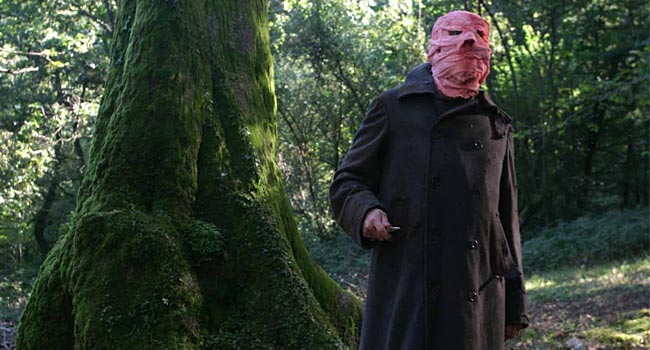
A man notices a naked woman in the woods behind his home, and his decision to take a closer look leads him down a path involving time travel and masked murderers. Director Nacho Vigalondo has a surprisingly airtight narrative (mainly helped by his use of a secluded location), with all of the fun coming from exactly how every piece of the story fits together. At times eerie, funny and intense, Timecrimes is a perfect example of how to make a great time travel movie. [CJ]
#1 – Monsters

Though it’s title doesn’t accurately indicate the cleverness of the film, Monsters stands out among indie sci-fi films as an alien creature-feature with heart. Taking place 6 years after a NASA space probe crash landed in Mexico and large tentacled alien creatures began their reign of terror; photo-journalist Andrew (Scoot McNairy) begrudgingly agrees to chaperon his boss’s daughter, Sam (Whitney Able), out of quarantined Mexico back to the States. Newby-Brit director Gareth Edwards has a refreshingly firm grasp on utilizing off-screen presence to build suspense, especially using sound. And while we see glimpses of the alien early in the film, the focus remains on the daily terror of the people living in this invaded country, giving the film a thoughtful humanistic vantage. Monsters also satisfies the sci-fi viewers most basic need to see the monster in it’s entirety at the very end, but in a way that is both provoking and beautiful. The ad-libbed performances of the main actors and the off-the-cuff low-budget cinematography, combined with the tasteful special effects (done entirely by Edwards with prosumer software in his bedroom!), make Monsters an indie sci-fi must-see. [Ananda]
